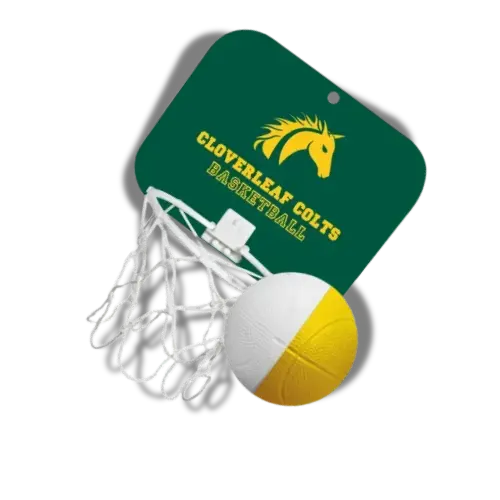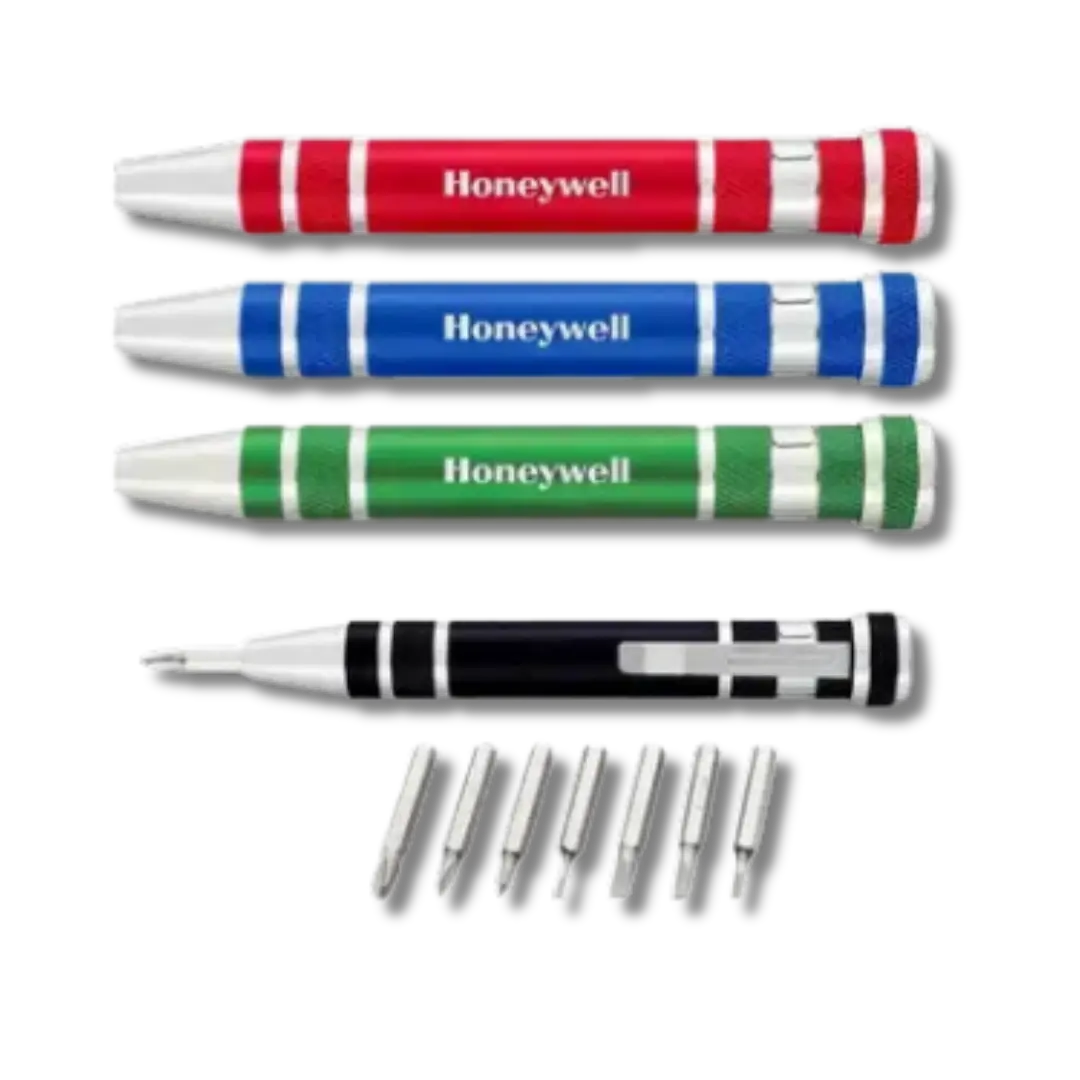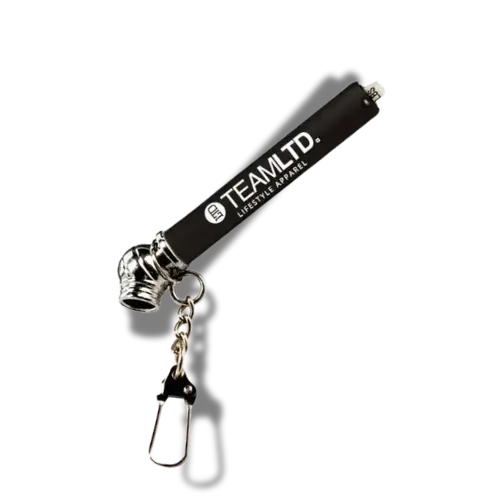8/31/2025
Running a business in 2025 feels a bit like walking a tightrope. Marketing budgets have flatlined at just 7.7% of overall company revenue—the lowest point since the pandemic, according to Gartner. At the same time, CMOs are being asked to do more with less, even as the share spent on paid media has dropped to just 25.6% of the total marketing budget. Leaders still see opportunity for growth, but the reality is clear: making every marketing dollar count has never been more important.
Here's what I've learned after working with hundreds of small businesses: promotional products aren't just nice-to-have giveaways anymore. They're strategic solutions to your biggest marketing headaches. And the numbers back this up—with 83% of consumers actively using promotional products and an average ROI of $6.41 for every $1 spent, these tangible marketing tools are solving problems that digital ads simply can't touch.
Let me show you exactly how promotional products address the five most pressing challenges small businesses face today, complete with real strategies and budget-friendly solutions you can implement immediately.
The State of Small Business Marketing in 2025
Before we dive into solutions, let's acknowledge where we are. The promotional products industry hit $27.8 billion in 2025, while small businesses are dealing with:
- 45% citing lead generation as challenging in 2025
- 37% struggling with employee retention
- 53% unable to afford loans at current interest rates
- Marketing budgets averaging just $500-2,000 monthly for most small businesses
But here's the encouraging part: promotional products deliver results that other marketing channels struggle to match. With a cost per impression of just $0.004 compared to $0.47 for digital display ads, smart small business owners are discovering that physical marketing still works—especially when it's strategic.
Challenge 1: Limited Marketing Budgets vs. Maximum Impact Needed
Your marketing budget feels like it's shrinking every month, yet you need more visibility than ever. Sound familiar?
The Problem: Most small businesses allocate 6-10% of their budget to marketing, but 66.3% spend less than $1,000 annually. Traditional advertising feels like throwing money into a black hole—you pay for impressions that disappear the moment your campaign ends.
The Promotional Product Solution
Unlike digital ads that vanish after 30 seconds, promotional products work 24/7 for months or even years. Here's the math that changed my perspective on marketing ROI:
- Custom pens: $0.35 each, used 300+ times = $0.001 cost per impression
- Logo tote bags: $2.50 each, seen 5,700+ times annually = $0.0004 cost per impression
- Branded water bottles: $3.75 each, kept for 12+ months = long-term visibility
Real-World Strategy
Instead of spending $500 monthly on Facebook ads that reach 1,000 people temporarily, invest that same amount in 400 custom stress balls at $1.25 each. Every recipient keeps it on their desk for an average of 8 months, creating 120,000+ brand impressions—that's $0.004 per impression versus Facebook's average of $0.47.
Budget-Friendly Implementation
- $100 Budget: 200 custom pens or 50 custom keychains
- $500 Budget: 100 polo shirts or 200 plastic water bottles
- $1,000 Budget: Mix of branded apparel, drinkware, and tech accessories for comprehensive brand coverage
Challenge 2: Generating Quality Leads That Actually Convert
Getting leads is one thing. Getting leads that turn into paying customers? That's where most small businesses struggle.
The Problem: 45% of small businesses find lead generation challenging in 2025. Cold outreach feels pushy, digital ads are expensive, and organic reach on social media keeps declining. You need a way to start conversations naturally and build trust before making sales pitches.
The Promotional Product Solution
Promotional products create what I call "reciprocity marketing"—when someone receives something valuable from you, they feel psychologically inclined to reciprocate. 73% of people are more likely to do business with companies that give them promotional products.
Lead Generation Strategies That Work
✅ Trade Show Transformation: Instead of boring brochures, offer custom phone accessories or portable chargers at your booth. People will actually wait in line for useful tech items, giving you 2-3 minutes of quality conversation time. 81% of trade show attendees become aware of new products at shows, but only if you can capture their attention first.
✅ Referral Program Amplifier: Launch a referral program where existing customers receive custom apparel or premium drinkware for every qualified lead they send. Promotional products generate 500% more referrals than traditional advertising because they make the referrer look good while promoting your brand.
✅ Follow-Up That Gets Noticed: After initial client meetings, send custom notebooks or desk accessories with your contact information. Unlike business cards that get lost, useful items stay visible on their desk, keeping you top-of-mind during their decision-making process.
Measuring lead quality means tracking which promotional products generate the most follow-up calls, monitoring conversion rates from trade show giveaways, and surveying customers on what first caught their attention.
Challenge 3: Building Brand Awareness on a Budget
You know your business offers incredible value, but getting people to notice you feels impossible without a massive advertising budget.
The Problem: Brand awareness requires consistent exposure, but traditional advertising costs make it prohibitive for most small businesses. You need your brand in front of potential customers regularly, but you can't afford billboards, radio spots, or major digital campaigns.
The Promotional Product Solution:
Think of promotional products as walking billboards that cost a fraction of traditional advertising. When someone carries your branded tote bag through the grocery store, wears your company t-shirt to the gym, or uses your logo mug at work, they're advertising for you—for free.
Brand Visibility Multipliers
✅High-Traffic Items:
- Tote bags: 5,700+ impressions annually per bag (used in public spaces)
- T-shirts and hoodies: 6,100+ impressions annually (worn in various settings)
- Car accessories: 9,000+ impressions annually (seen during commutes)
✅Brand Recognition Psychology: 90% brand recall rate from promotional products versus 54% for digital ads. Why? Because physical items engage multiple senses and create stronger memory associations. Your customer sees your logo, feels the quality of the product, and experiences the satisfaction of using something useful—all positive associations with your brand.
✅Community Event Sponsorship: Instead of paying $1,000+ for event sponsorship, provide custom water bottles or sunscreen packets at local events. Your cost: $200-400. Every person at the event sees your logo multiple times throughout the day.
✅Strategic Partnerships: Partner with complementary businesses to include your branded pens or lip balm in their customer welcome packages. They get added value for their customers; you get brand exposure to their entire customer base.
✅Employee Brand Ambassadors: Provide your team with quality branded apparel they actually want to wear outside work. 69% of people wear company-branded items outside of work, turning your employees into brand ambassadors in their communities.
Challenge 4: Customer Retention and Building Long-Term Loyalty
Acquiring new customers costs 5-7 times more than retaining existing ones, yet most small businesses focus primarily on acquisition instead of retention.
The Problem: In competitive markets, customers switch brands easily. You need ways to stay top-of-mind and create emotional connections that go beyond just price comparisons. Digital marketing feels impersonal, and customers are bombarded with promotional emails they ignore.
The Promotional Product Solution:
Promotional products create physical touchpoints that maintain your relationship between purchases. When a customer uses your branded item daily, they're reminded of positive experiences with your business, increasing the likelihood of repeat purchases and referrals.
Customer Retention Strategies:
✅Thank You Gift Programs: After every purchase or milestone (1st purchase, 1-year anniversary, referral), send premium promotional items like custom notebooks, quality drinkware, or useful desk accessories. 61% of people have a more positive impression of brands after receiving promotional products.
✅Seasonal Stay-Connected Campaigns: Send seasonally relevant items that demonstrate you're thinking of your customers beyond just sales:
- Spring: Custom seed packets or gardening tools
- Summer: Branded sunscreen or cooling towels
- Fall: Custom hand warmers or cozy apparel
- Winter: Hot chocolate packets or custom mugs
✅Loyalty Program Enhancement: Instead of just offering discounts, provide branded merchandise tiers:
- Bronze Level: Custom keychain and pen set
- Silver Level: Logo apparel and drinkware
- Gold Level: Premium tech accessories and gift sets
✅Measuring Retention Impact:Track these metrics to measure promotional product effectiveness:
- Customer lifetime value increases after receiving promotional items
- Repeat purchase rates compared to customers who didn't receive items
- Referral rates from promotional product recipients
Challenge 5: Employee Morale and Retention in Competitive Job Markets
Small businesses struggle to compete with big companies' benefits packages, yet employee retention directly impacts your bottom line and customer experience.
The Problem: 37% of small businesses struggle with employee retention, and recruiting difficulties affect 89% of small businesses. High turnover costs 50-200% of an employee's annual salary in recruitment, training, and lost productivity. You need cost-effective ways to show appreciation and build team loyalty.
The Promotional Product Solution:
Employee recognition through promotional products significantly impacts retention:
- Employees who receive promotional products stay 1.5 years longer with their employers
- 88% of employees who received branded gifts remained with companies for 15+ years
- 73% report increased sense of belonging after receiving company promotional products
Employee Appreciation Strategies
✅Welcome Package Programs: Create impressive onboarding experiences with branded welcome kits including:
- Quality polo shirts or hoodies they'll actually wear
- Custom notebooks and premium pens for daily use
- Branded water bottles or coffee mugs for office use
- Welcome letter explaining your company culture
✅Achievement Recognition Items: Celebrate milestones with meaningful promotional products:
- Work anniversaries: Custom plaques, premium apparel, or personalized desk accessories
- Project completions: Team shirts, custom stress relievers, or celebration items
- Goal achievements: Trophy items, certificates in custom holders, or commemorative gifts
✅Team Building Through Branding: Provide matching team apparel for company events, trade shows, or community service activities. This creates unity while providing free advertising when employees wear items outside work.
✅Budget-Conscious Implementation:
- $50 per employee annually: Custom pens, keychains, and basic apparel
- $150 per employee annually: Mix of apparel, drinkware, and desk accessories
- $300 per employee annually: Premium items, tech accessories, and milestone gifts
✅ROI of Employee-Focused Promotional Products: If promotional products help retain just one employee for an extra year, you save $15,000-75,000 in turnover costs (depending on position), far exceeding your promotional product investment. This math makes promotional products one of the most cost-effective marketing strategies available to small businesses.
Implementation: Your 90-Day Promotional Product Strategy
Ready to solve your marketing challenges with promotional products? Here's your step-by-step implementation plan:
Days 1-30: Foundation and Planning
- Audit current marketing spend and identify 20-30% to reallocate to promotional products
- Define primary challenges from the five covered (budget constraints, lead generation, brand awareness, customer retention, employee morale)
- Research suppliers and request samples of items you're considering
- Set measurable goals for each promotional product initiative
Days 31-60: First Campaign Launch
- Start with one high-impact category (choose based on your primary challenge)
- Order initial quantities (start small to test effectiveness)
- Develop distribution strategy for maximum exposure
- Implement tracking systems to measure results
Days 61-90: Scale and Optimize
- Analyze results from your first campaign
- Scale successful items and eliminate underperformers
- Launch secondary campaigns addressing other challenges
- Develop ongoing promotional product calendar for sustained impact
Common Mistakes to Avoid
Learn from others' expensive mistakes:
❌ Quality Over Quantity Always: Cheap promotional products reflect poorly on your brand. It's better to give 100 quality items than 500 poor-quality ones that break immediately.
❌ Relevance to Your Audience: Don't choose items just because they're cheap or trendy. A tech company giving out seed packets or a financial advisor distributing sports equipment creates disconnect between your brand and the item.
❌ Tracking and Follow-Up: Without measurement, you can't optimize. Always have systems in place to track the effectiveness of your promotional product campaigns.
❌ Strategic Distribution: Random distribution wastes money. Target your ideal customers at places and times when they're most receptive to your message.
The Future of Promotional Products for Small Business
As we look toward the rest of 2025 and beyond, several trends will shape promotional product effectiveness:
💪🏼 Sustainability Focus
72% of consumers prefer eco-friendly promotional products. Investing in sustainable options like recycled materials, reusable items, and **biodegradable products** aligns with consumer values while supporting your brand image.
💪🏼 Personalization Technology
Advances in digital printing and customization make it affordable to create personalized promotional products even in small quantities. This trend increases effectiveness as 39% of Gen Z consumers keep promotional products because they feel unique or personal.
💪🏼 Integration with Digital Marketing:
Smart promotional products include QR codes, NFC technology, or social media integration that bridge physical and digital marketing efforts, creating measurable pathways from promotional products to online engagement.
Start Solving Your Marketing Challenges Today
Small business marketing doesn't have to feel overwhelming or impossibly expensive. Promotional products offer practical solutions to your most pressing challenges while delivering measurable ROI that traditional advertising can't match.
The promotional products industry reached $27.8 billion in 2025 because they work. With 83% of consumers using the branded items they receive and 500% more referrals than traditional advertising, promotional products solve real business problems while building long-term relationships.
Your next customer might be carrying your branded tote bag right now. Your best employee might stay another year because of the appreciation gifts you provide. Your biggest referral source might be someone who received your promotional product at a trade show months ago.
The question isn't whether promotional products can solve your marketing challenges—it's which challenges you want to tackle first.
Ready to transform your marketing strategy with promotional products that actually work?
Browse our catalog of promotional products and start building a strategic plan tailored to your marketing goals and budget.Your competition is probably still relying on expensive digital ads that disappear after 30 seconds. Make your mark with marketing that lasts.
Olivia Smith
Lead Content Strategist
Olivia Smith is a marketing and design expert who specializes in transforming spaces to maximize impact and functionality. With a deep understanding of promotional product trends, Olivia helps brands create stylish, space-efficient environments that attract and engage.






































